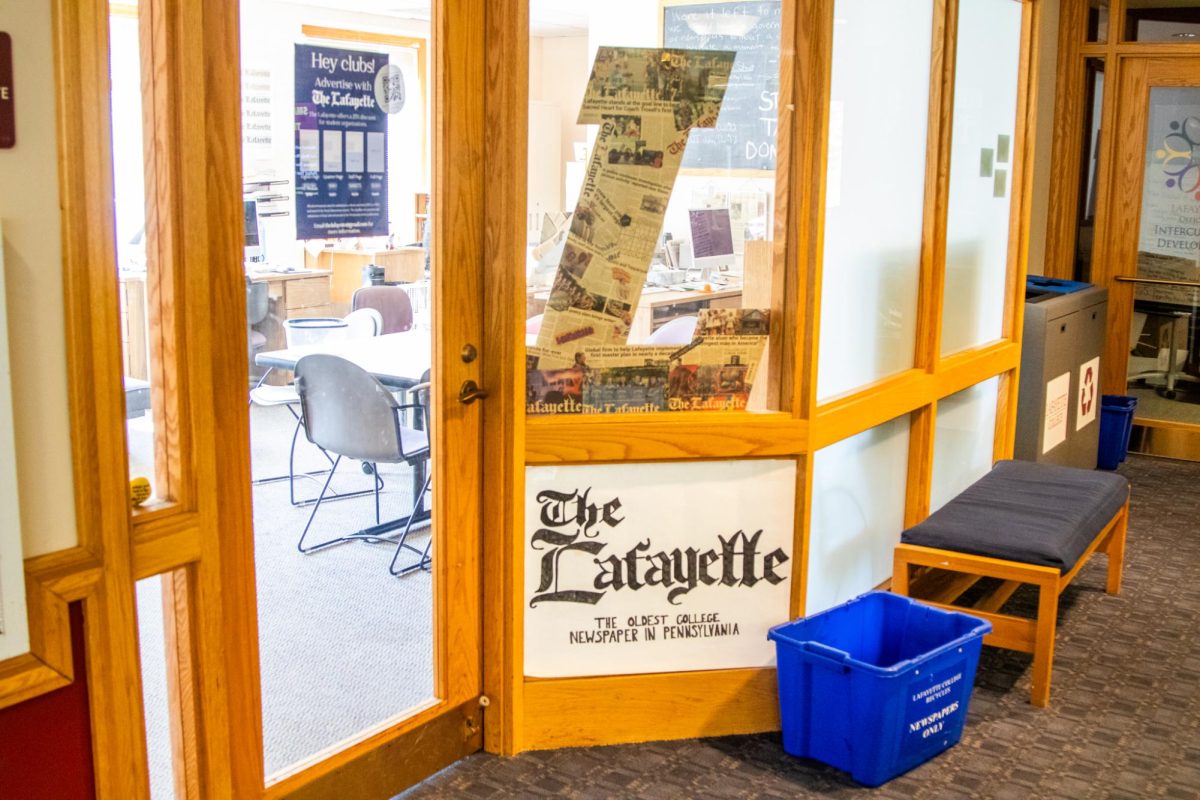The COVID-19 era is sure to be one studied by generations to come, but at least in the case of Lafayette College, there largely lacks a physical record of the early days of the pandemic.
That is, until today.
The Lafayette has printed, for the first time, all of the articles published solely online during the college’s remote fall 2020 semester.
“It’s a wonderful moment for me to see that students recognize the importance of making sure that all of the content that was written by student authors from the past is … documented,” Elaine Stomber ’89, the college archivist, said. “We want to make sure that there aren’t gaps in the history.”
Stomber said that the printed COVID-era newspapers will prove valuable to researchers seeking to understand the college’s history. Largely unaltered from how they were designed three years ago, the printed newspapers will, like each of the issues published since The Lafayette was established in 1870, be bound and stored in the college’s rare books collection.
“The newspaper has been so, so crucial in terms of college archives teaching in the classroom,” Stomber said. “The student newspaper is really important so that you can kind of, on the ground, see what students were thinking and what was important to them which can be very different from the institutional perspective.”
While the college continued to issue communiques throughout the pandemic, The Lafayette ceased print publication after the transition to remote operations – the only other time such a move was made was during World War II. Editor-in-chief Claire Grunewald ’20 wrote to the campus community at the time that, while there was not much for The Lafayette to write about during the pandemic, it remained obligated to provide the campus community with “the most up-to-date coverage and information” possible, if only online.
“When things were happening, it felt like we couldn’t not report,” Grunewald said.
During the earliest days of the pandemic, the work of the newspaper was mostly carried out by a skeleton crew of editors who communicated largely via group chat. This group eventually produced a PDF version of The Lafayette that was published online in April 2020.
“We put so much into this newspaper,” Grunewald said. “We wanted something, at least one other edition, to show for it.”
The Lafayette did not produce another print-like issue after April, however. It instead sporadically published articles online when the need arose. According to Grunewald, there simply was not enough news to make a newspaper.
“Aspects of what was life at Lafayette at that time were kind of lost,” Grunewald said, recounting several “moments of humanity” that were never covered by The Lafayette – a socially-distanced graduation tailgate, students collecting their research from empty buildings, professors dropping off groceries at students’ houses – moments lost to time because the reporting capabilities of the newspaper were handicapped.
The newspaper continued producing articles after Grunewald graduated, then with Ben Fuller ’21 at the helm.
“We were covering stories that people on campus felt were important,” Fuller, who served as the news editor under Grunewald, said.
Under Fuller, The Lafayette covered a number of events throughout the summer months of 2020 as the United States endured a reckoning over race. Articles published during this time looked at a petition opposing Public Safety, a Lafayette pitcher signing with the Philadelphia Phillies and the college’s plans for allowing students back to campus, among other things. Much like the articles published in the latter part of the spring semester, these were never cataloged outside of the newspaper’s website.
“It’s too bad there wasn’t an actual paper to carry that, but I think it was still relevant to put that out over the summer,” Andrew Hollander ’21, who worked closely with Fuller as the managing editor, said.
The articles published solely on the newspaper’s website were not cataloged by the college archives, according to Stomber, the archivist. In fact, the college archives are entirely incapable of archiving the newspaper’s website.
“That’s why it’s really been important for us to archive the PDF of the newspaper,” Stomber said.
The Lafayette has, in recent days, created a PDF version of the website-exclusive articles from spring and summer 2020 that will be submitted to the college archives.
It is with an archival mindset that The Lafayette began creating PDF versions of the newspaper a few weeks into the fall 2020 semester, an effort spearheaded by newly-anointed design directors Deanna Hanchuk ’22 and Hayden Fisher ’22. By that point, the newspaper was again publishing on a weekly basis, albeit only online.
“What are you supposed to do with this Zoom newspaper thing?” Hanchuk said. “The articles are still getting published online, but where does that go afterwards?”
Fisher said that designing the newspaper that fall brought her a sense of identity and gave her role a sense of purpose.
“There was so much significant about that semester that the idea of not submitting PDFs of the newspaper to the archives felt like it was such a disservice to the newspaper,” Fisher said.
Hanchuk and Fisher, who spent countless hours creating the PDFs, even came up with a moniker for the online-only versions of the newspaper: COVID Chronicles. Fisher hand drew a logo that would be stamped, digitally, on each issue.
“They made a heroic effort on their own time to go back to those issues and design them and lay them out,” Fuller said of Hanchuk and Fisher. “They just didn’t want to have a gap in the archive.”
Editor’s note: The publication of the COVID Chronicles was made possible by the generous contributions of the Government & Law Department, the English Department, the Office of the Provost, Skillman Library, the Theater Department, the Anthropology & Sociology Department and the Psychology Department.






































































































